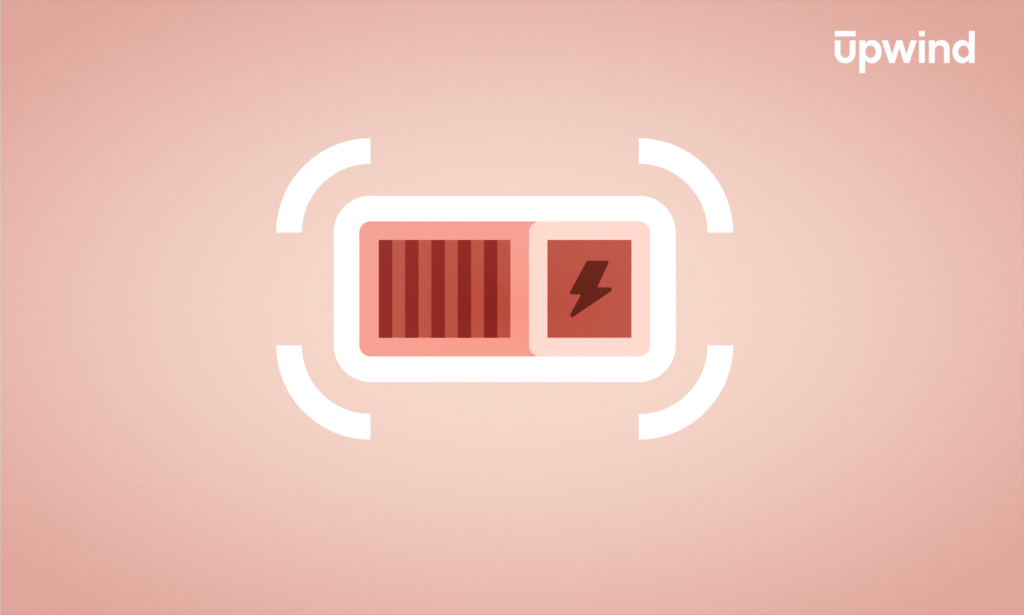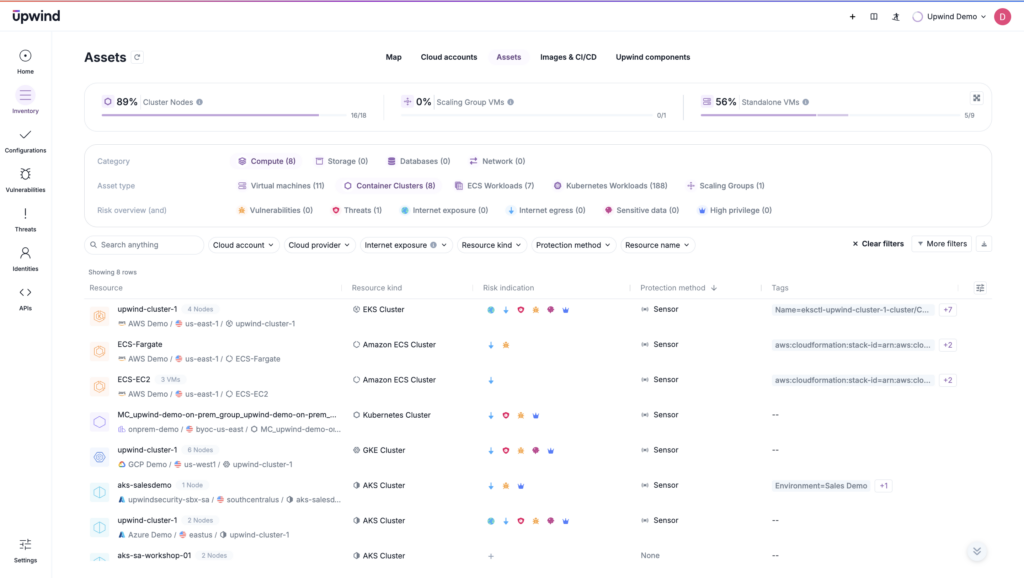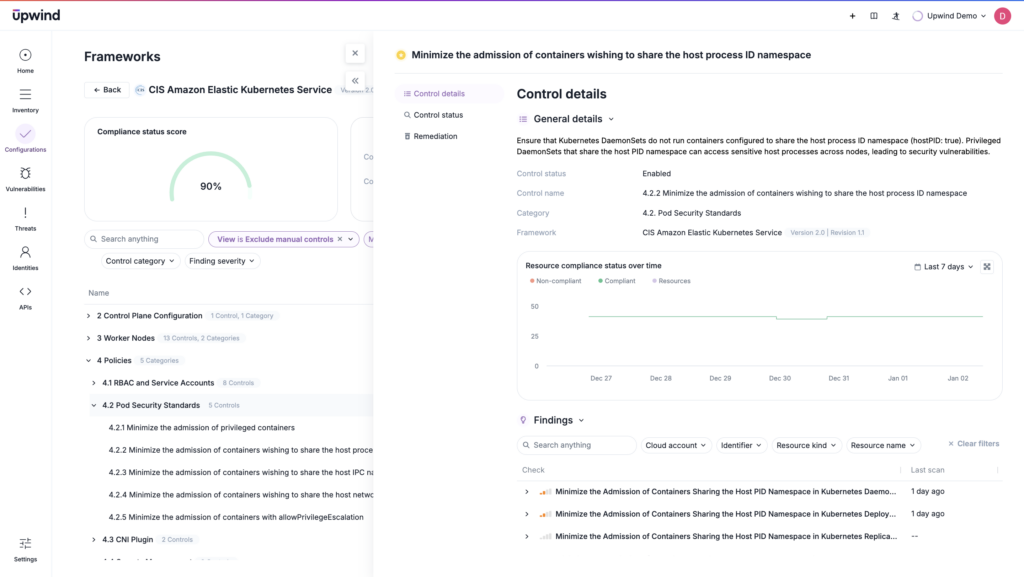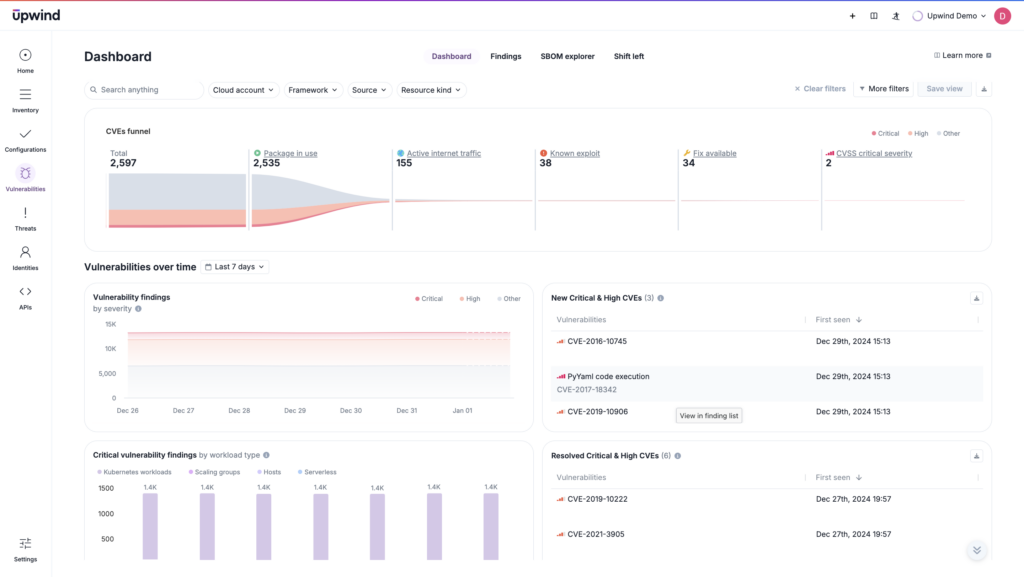
Apps and their dependencies don’t run on their own — they need container runtimes to help power their execution by providing the right environment, resource management, and lifecycle operations for containers. While we’ve covered container runtimes and container runtime security, we haven’t looked at a foundational component of containers themselves — the Container Runtime Interface (CRI). And while it’s not a security component itself, the CRI still sparks debates about fragmentation, security, compliance, and scalability. In this article, we’ll address the basics as well as the deeper debates about this powerful runtime enabler.
What is Container Runtime Interface (CRI)?
The Container Runtime Interface (CRI) is a standardized API layer in Kubernetes using gRPC (a high-performance remote procedure call protocol) that allows the kubelet (node agent) to communicate with multiple container runtimes like containerd and CRI-O.
The CRI abstracts container lifecycle operations such as pulling images, starting, and stopping containers, enabling Kubernetes to work with multiple container runtimes without modification. It includes two core components that define how Kubernetes works with container runtimes:
RuntimeServiceto handle the lifecycle of containers. It manages pod sandboxes so containers share resources like networks and storage when needed.ImageServiceto manage container images used by the runtime. It optimizes image pulling and caching for efficient deployments.
Before the CRI, Kubernetes needed direct integrations with each runtime, resulting in over dependence on one-size-fits-all runtimes, dissatisfied developers, and poorer performance.
Using CRI, Kubernetes remains flexible and modular so organizations avoid vendor lock-in and can adopt the best runtime for their needs. That improved app performance, as the CRI let teams opt for improved runtimes based on a wide range of features, including:
- Speed and Minimal Resource Usage: Lightweight runtimes that prioritize performance, ideal for high-density environments or resource-constrained systems.
- Full Feature Sets: Runtimes that provide rich tooling and developer-friendly workflows like Docker, with its built-in image registry integration.
- Sandboxed Containers for Stronger Isolation: Enhanced security through runtimes like gVisor or Kata Containers, which reduce risks of container escapes and privilege escalations.
- Latency: Runtimes optimized for ultra-fast startup times, important for serverless applications or edge computing workloads.
- Unique Architectural Needs: Specialized runtimes designed for specific use cases, such as
Firecrackerfor serverless orWASIfor WebAssembly workloads. - Multi-Tenancy Support: Runtimes for securely running multiple workloads on shared infrastructure with strict isolation.
- Integration with Kubernetes: Seamless compatibility with Kubernetes via the CRI.
- Scalability: Runtimes that handle high container density and scale in large clusters.
- Compliance and Security Policies: Runtimes that integrate with enterprise security tools and enforce policies like seccomp, AppArmor, or image provenance.
- Ecosystem Fit: Runtimes that align with existing tools and workflows.
- Cost Efficiency: Runtimes that reduce overhead, especially in large-scale deployments.
Runtime and Container Scanning with Upwind
Upwind offers runtime-powered container scanning features so you get real-time threat detection, contextualized analysis, remediation, and root cause analysis that’s 10X faster than traditional methods.
What does the CRI Mean for Security?
The CRI has a foundational role in Kubernetes’ container management, but its connection to Kubernetes security is in its ability to enable secure interactions between Kubernetes and container runtimes. While the CRI doesn’t enforce security, it does facilitate its implementation through container runtimes and external tools. Here’s how:
Runtime Flexibility and Security Innovation
The CRI means that Kubernetes can work easily with multiple container runtimes so teams can choose runtimes with security features tailored to their own needs, like sandboxed runtimes that can provide enhanced isolation and prevent container escapes to protect apps that work with personally identifiable information (PII).

Consistent Policy Enforcement
Through the CRI, Kubernetes communicates with container runtimes to apply security policies from restricting privileged containers to limiting system calls based on predefined profiles.

Security Tool Integration
The CRI makes it easier to integrate runtime security tools and platforms into Kubernetes environments. This orchestration context helps security tools correlate runtime behaviors with Kubernetes configurations, making it easier to identify vulnerabilities that result from misconfigured pods or overly permissive access controls.

Enabling Multi-Tenancy
The CRI supports Kubernetes environments running multiple workloads or tenants on shared infrastructure, so teams are more easily able to secure runtimes with strong isolation for untrusted or sensitive workloads and ensure workload segmentation, preventing one tenant from affecting another.
Ultimately, the CRI standardizes interactions between Kubernetes and container runtimes, simplifying security practices like enforcing consistent policies, correlating behaviors and resources at runtime, and enabling secure runtimes.
How does CRI Compare to Related Concepts?
The CRI is one part of the Kubernetes ecosystem, but it can be confused with other tools and components that also deal with container orchestration, runtime, and security. Here’s how CRI differs from and works alongside these components:
| Concept | What does it do? | Relationship to CRI |
| Docker | A container runtime and ecosystem with developer tools for building, sharing, and running containers | Initially used directly by Kubernetes but lacking native CRI support. Kubernetes now uses Docker indirectly via containerd. |
| containerd | A lightweight container runtime that manages container lifecycles and images | One of the most popular runtimes that implements the CRI |
| CRI-O | A Kubernetes-native container runtime optimized for lightweight deployments | Purpose-built for Kubernetes and supports CRI out of the box for runtime management |
| Pod Sandbox | The shared execution environment created by the CRI for all containers in a pod (e.g., shared networking) | Managed by CRI’s RuntimeService, they container isolation at the runtime level. |
| Admission Controllers | Kubernetes plugins that enforce or validate policies on objects before they are admitted to the cluster | While CRI enforces runtime-level actions, admission controllers handle broader policies at the cluster level |
| Runtime Monitoring Tools | Specialized tools to detect and alert on anomalous runtime behavior | Work alongside CRI-compliant runtimes to add security monitoring, filling gaps in runtime visibility |
| Cloud-Native Application Protection Platforms (CNAPPs) | Comprehensive platforms that can integrate runtime, orchestration, and vulnerability management | CRI supports runtime lifecycle operations that CNAPPs rely on to monitor and secure containerized workloads. |
While this table compares related tools and concepts, it doesn’t account for CRI’s impact on flexibility, security, and scalability, especially against overlapping technologies and components. There are some key concepts to keep in mind.
First, CRI’s ability to abstract container lifecycle management offers operational consistency, but this simplicity belies the nuanced decisions teams will inevitably face when balancing runtime choices.
For example, Docker’s legacy integration with Kubernetes introduced overhead that modern CRI-compliant runtimes like containerd and CRI-O avoid, but these newer runtimes lack some of Docker’s developer-focused features. Today, teams must ask, “How much flexibility do we need versus how much operational efficiency can we afford to sacrifice?” With CRI, Kubernetes can pivot to runtimes optimized for different workloads, but this flexibility demands a well-defined policy framework so runtime misconfigurations don’t propagate security risks.
Next, when it comes to runtime isolation and security, CRI shines as an enabler of sandboxed runtimes, like gVisor and Kata Containers. These runtimes address container escapes and privilege escalation, critical for high-compliance industries.
However, adopting them requires buy-in on added complexity. CRI ensures Kubernetes can seamlessly integrate these runtimes, but teams must still weigh whether such strong isolation is necessary across the board or only for select workloads, especially in multi-tenant environments.
Beyond integration, the relationship between CRI and runtime security tools underscores its foundational role. Tools like CNAPPs complement the CRI by monitoring runtime behavior and correlating it with Kubernetes configurations.
For example, detecting anomalous behaviors, such as unexpected system calls or privilege escalations, relies on runtime telemetry that CRI-compliant runtimes can provide. However, the CRI itself doesn’t handle this monitoring. Instead, it facilitates a consistent framework for tools to plug into. That division of responsibility means teams must carefully architect their stack to include tools that handle functions CRI doesn’t cover, like runtime anomaly detection or misconfiguration analysis.
Further, CRI’s impact on multi-tenancy and workload segmentation offers another layer of depth. In environments where multiple applications share the same cluster, maintaining strict isolation between tenants is a must-do. CRI enables Kubernetes to enforce segmentation by working with runtimes that support strong namespace and resource isolation. That’s a start. However, the challenge isn’t just choosing the right runtime but also making sure higher-level policies get enforced, like network segmentation or RBAC. CRI leaves these broader policy concerns to Kubernetes’ orchestration layers, so teams must fill the gaps.
Finally, the scalability and future-proofing implications of CRI are at the core of its significance. As Kubernetes evolves and new runtimes emerge — such as those optimized for edge computing or serverless workloads — the CRI lets Kubernetes integrate them without major rewrites.
This modularity allows teams the freedom to experiment with cutting-edge runtimes without changing up orchestration workflows. However, scalability introduces its own risks: managing a heterogeneous runtime environment can create complexity in policy enforcement, monitoring, and runtime-specific configurations. The CRI mitigates this to some extent by standardizing interactions, but visibility and enforcement across runtimes still fall to teams.
In the end, CRI isn’t just about managing containers — it has changed how teams will manage their hosts of tools, policies, and workloads across an ever-evolving ecosystem. Do teams need multiple workloads? Which ones? With how much added complexity?
The CRI is not just a technical abstraction but a core enabler for Kubernetes’ flexibility, scalability, and security. It lets teams adopt the runtimes and tools that best meet their needs but simultaneously raises questions about balancing operational complexity, runtime isolation, and multi-layered security. As threats and workloads both change, the CRI has created the need for teams to keep up with the complexity of both.
Upwind Powers Real-Time Insights into Containers
Whether securing workloads in multi-tenant environments or enhancing isolation for sensitive applications, Upwind helps teams achieve better security without sacrificing operational efficiency. With real-time runtime visibility into Kubernetes clusters, Upwind monitors system calls, network activity, and file access to detect and respond to threats as they happen. And by using runtime data alongside Kubernetes’ orchestration context, Upwind makes sure that vulnerabilities, misconfigurations, and security risks are identified in the environments where they matter most.
To see how Upwind enforces consistent security policies across container runtimes, schedule a demo.
FAQ
What’s the difference between Docker and containerd?
Docker is a container platform with tools for building, sharing, and running containers. It includes developer-friendly features like the Docker CLI and Docker Compose, and comes with comprehensive features that make it ideal for development and small-scale deployments. Docker:
- Is a full-featured platform for container creation, testing, and deployment.
- Includes advanced networking, image registries, and developer tools.
- Needs additional overhead when used with Kubernetes.
containerd is a lightweight runtime focused only on container lifecycle management, optimized for efficiency and designed to integrate directly with Kubernetes as a CRI-compliant runtime. containerd is designed for efficiency and works well when integration with Kubernetes is key. containerd:
- Is a lightweight, low-level runtime for managing container lifecycles.
- Was designed for production efficiency and direct Kubernetes integration.
- Comes with simple and limited functionality, relying on external tools for features like image building.
What’s the difference between CRI-O and containerd?
CRI-O and containerd are both lightweight container runtimes that integrate with Kubernetes. Why choose one over the other? CRI-O is the lightest option, but containerd offers broader capabilities. Let’s compare:
CRI-O is better for:
- Those looking to integrate with Kubernetes, but with limited other features
- Prioritize resource efficiency
containerd is better for:
- Teams that need a versatile runtime with use cases beyond Kubernetes, like Docker-based workflows
- Those who need compatibility with platforms outside Kubernetes, for example, integration with the CI/CD pipeline or serverless computing.
- Teams looking for advanced image handling and storage not specific to Kubernetes
- Your team is familiar with Docker, since containerd shares much of its key functionality
How is container runtime different than VM?
Container runtimes and virtual machines (VMs) both isolate workloads. But container runtimes do so at the operating system level using virtualization. They share the host OS kernel but run independently on their own filesystem, libraries, and dependencies. Examples are containerd, Docker, and CRI-O. Container runtimes are preferred for cloud-native workloads and applications.
VMs use hardware-level virtualization to create isolated environments. VMs each include their own operating system. They use more resources, take longer to start, and offer stronger isolation because they don’t share the host kernel. VMs are preferred for running monolithic applications (especially those that require strong isolation) or legacy systems.






